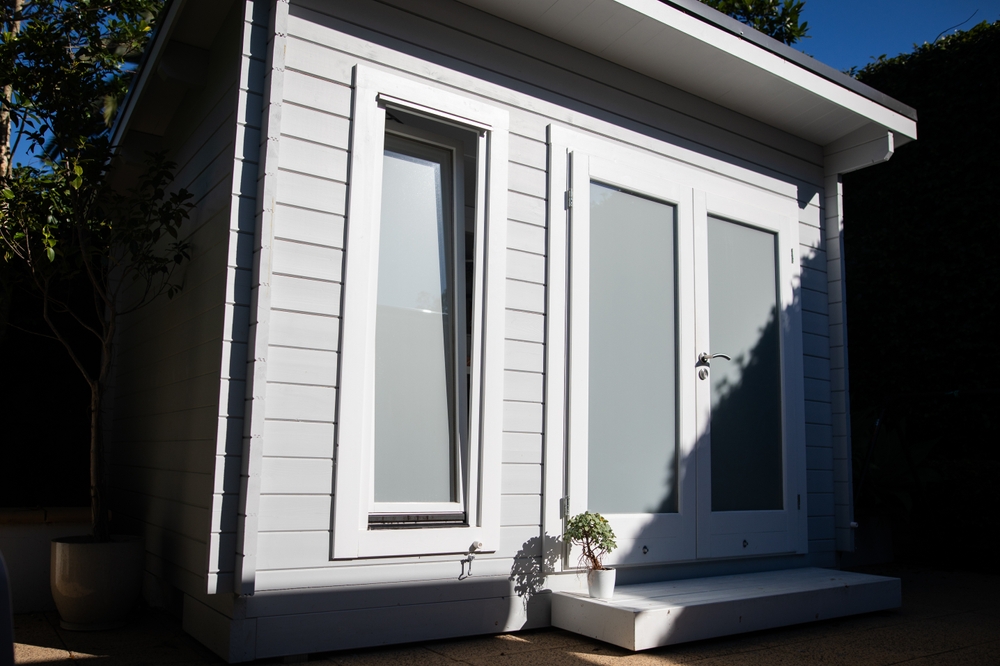‘Granny Pods’ Are New Housing Units That Allow Your Aging Parents To Live In Your Backyard

As our loved ones grow older, finding the right balance between their independence and the care they need can be a challenge. Enter granny pods—an innovative approach to eldercare that’s gaining attention for its ability to keep families close while preserving personal freedom. These small, purpose-built housing units are designed with seniors in mind, offering a practical alternative to traditional care options.
With features tailored to safety and accessibility, granny pods promise a new way to support aging family members. But what makes them so appealing? And could they be the right fit for your family? Let’s explore how this modern solution is reshaping the conversation around senior living.
Granny Pods: Designed for Safety and Comfort
Granny pods, also known as MEDCottages, are compact housing units crafted to meet the unique needs of seniors while keeping them close to their families. First introduced in 2010 by N2Care, these innovative homes are a blend of thoughtful design and modern technology, offering a safe, comfortable environment for aging loved ones.
These units typically range in size from 250 to 900 square feet and are equipped with features tailored to senior safety and accessibility. Wheelchair-friendly layouts, handrails, lighted floorboards, and soft flooring to reduce fall injuries are standard inclusions. Beyond physical safety, granny pods incorporate smart technology, such as voice-controlled lighting and temperature adjustments, allowing seniors to maintain a high level of independence with ease.
By merging privacy with proximity, granny pods offer a practical solution for families seeking to provide care without sacrificing their loved ones’ autonomy. Their forward-thinking design is helping to redefine what it means to age in place.
The Perks of Choosing a Granny Pod

Granny pods bring a host of benefits, making them a compelling choice for senior care. Chief among these is the emotional closeness they foster, allowing aging loved ones to stay near family while maintaining their own space. This proximity can strengthen bonds and provide a much-needed sense of connection and support.
From a practical perspective, granny pods empower seniors to retain their independence, all while benefiting from customized safety features. Hand railings, voice-activated emergency systems, and other smart technologies ensure both comfort and security, offering peace of mind for families and residents alike.
Financially, these units often prove to be a cost-effective alternative to traditional nursing homes. They can save families substantial expenses over time, and as an added bonus, a well-designed granny pod might even boost your property’s value—combining care with a smart investment. For families seeking a balanced approach to eldercare, granny pods offer a blend of emotional, practical, and financial advantages.
Challenges to Consider with Granny Pods
Despite their many benefits, granny pods aren’t without challenges, and families should weigh these carefully before making a decision. One potential concern is finding the right balance of care. While these units promote independence, some seniors may require more hands-on assistance than the pods can accommodate.
Community acceptance can also pose an issue. Neighbors might resist these structures, fearing they could change the neighborhood’s character. On the financial side, the initial costs of purchasing and installing a granny pod can be significant, potentially outweighing the savings compared to other senior living options.
Practical hurdles, such as zoning restrictions, may prevent granny pods from being installed in certain areas. Additionally, not all future homebuyers may see these units as a benefit, which could complicate resale efforts. While granny pods offer an innovative approach to eldercare, these considerations highlight the importance of thorough planning and research to ensure they’re the right fit for your family and situation.
Are Granny Pods Right for Everyone?
Despite their innovative design, granny pods are not without their share of criticism and controversy. Opponents often argue that these units could be misused or even trivialize eldercare, likening them to storage units for seniors. This perception raises concerns about their ethical use and long-term impact on families and communities.
Regulatory hurdles also play a significant role in the debate. Zoning laws in many areas, particularly in urban and suburban neighborhoods, restrict or outright prohibit granny pods. Communities worry about issues like overcrowding, increased traffic, and alterations to neighborhood character. Even in states where granny pods are permitted, access is often limited by strict regulations, such as proving medical necessity, which may exclude seniors who are still relatively independent.
Another concern is the potential for misuse. Critics fear these structures might be repurposed as cheap housing for groups other than seniors, creating enforcement challenges and fueling opposition. While granny pods present a promising alternative for eldercare, their acceptance hinges on addressing these criticisms and finding a balance between innovation and community standards.
When Assisted Living Is the Better Option
While granny pods are innovative, they may not be the right solution for every senior’s needs. For aging loved ones who require consistent, hands-on care—whether for daily tasks like bathing or more complex challenges like dementia—assisted living communities often provide a safer and more practical alternative.
These facilities offer specialized care that goes beyond what backyard housing can accommodate. Memory support programs, secure environments to prevent wandering, and professional oversight ensure that seniors receive the attention they need. Additionally, assisted living communities foster social engagement and cognitive stimulation, creating opportunities for interaction and mental enrichment that granny pods might not provide.
For families facing more advanced caregiving needs, assisted living can deliver the round-the-clock care and peace of mind that technology and proximity alone cannot guarantee.
Why Social Interaction Matters for Seniors

Social connection is a cornerstone of senior well-being, playing a crucial role in reducing depression and slowing cognitive decline. While granny pods offer proximity to family, they may inadvertently limit opportunities for meaningful social interaction. Without regular engagement with peers, seniors are at a higher risk of developing loneliness, depression, and even dementia.
Assisted living communities address this need by fostering a sense of belonging. These environments provide access to group activities, wellness programs, and daily opportunities for socialization, helping seniors maintain emotional and mental health. For many aging adults, this level of companionship and stimulation is difficult to replicate in a standalone backyard dwelling, highlighting the importance of considering social needs when choosing eldercare options.
Why Senior Living Communities May Be a Better Fit
While granny pods emphasize independence and proximity, senior living communities offer a more comprehensive approach to eldercare. These communities are designed to address the full spectrum of senior needs, blending downsized, accessible living spaces with 24-hour professional care and a wealth of social and physical activities.
Much like granny pods, senior living apartments come equipped with essential safety features, such as grab bars and emergency call buttons. However, they go a step further by fostering a vibrant sense of community. Group activities, wellness programs, and daily interactions with peers create an engaging environment where seniors can thrive both physically and emotionally.
For families exploring eldercare options, senior living communities provide a balanced solution—offering safety, support, and enrichment in a way that backyard housing simply cannot match.
Choosing the Right Path for Your Loved Ones

Deciding how best to care for aging loved ones is deeply personal and often complex. Granny pods offer a modern, innovative solution that prioritizes independence and proximity, making them a great choice for some families. However, they may not address the full spectrum of physical, emotional, and social needs that seniors face as they age.
On the other hand, senior living communities provide a more holistic approach, combining safety, professional care, and opportunities for social connection. For those requiring specialized assistance or a more engaging environment, these communities often emerge as the better option.
Ultimately, the choice between a granny pod and assisted living comes down to the unique needs of your loved ones and your family’s circumstances. By weighing the pros and cons carefully, you can create a care plan that prioritizes safety, well-being, and dignity, ensuring your loved ones enjoy the best possible quality of life.
Featured image from: Shutterstock
Loading...






